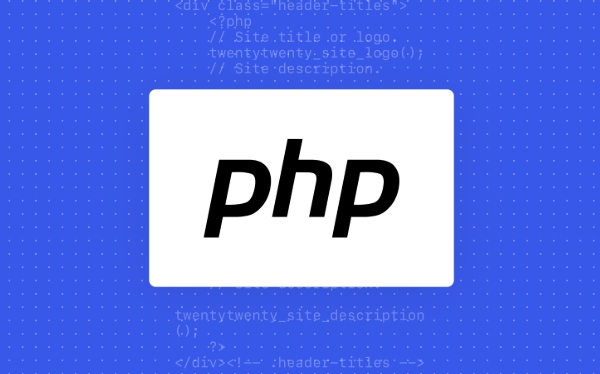When encountering the problem that header('Location: ...') does not work, the common reasons and solutions are as follows: 1. The header has failed in advance. The solution is to ensure that there is no output before the jump, including spaces, HTML or echo; 2. There is excess output or UTF-8 BOM characters in the include or require file. The file encoding should be checked and saved as "UTF-8 No BOM"; 3. It is recommended to use ob_start() to turn on the output buffer before the jump, and cooperate with ob_end_flush() to delay the output; 4. Be sure to add exit after the jump to prevent subsequent code execution; 5. Make sure that the header() function call is before all outputs.

When using PHP, if you have problems with header('Location: ...') not working, especially after calling include or require , this is usually caused by some common errors. Here are some common reasons and corresponding solutions.

The output has been sent to the browser
The most common problem is: there is already output before header() is called . Even a space, line break or HTML tag will cause the header to fail.
For example:

<?php include 'somefile.php'; // If there is output (including blanks) in somefile.php, the header will fail header('Location: https://example.com');
Solution:
- Make sure that the included file (such as
somefile.php) has no extra spaces or output. - Use
ob_start()to enable output buffering and delay output:
<?php ob_start(); // Turn on output buffer include 'somefile.php'; // After completing the logic, jump to header('Location: https://example.com'); ob_end_flush(); // Send buffered content exit;
Note: Even if buffering is turned on, it is recommended to avoid any output operations before jumping.
header() must be called before HTML content
header() function of PHP must be called before any actual output, such as HTML, echo, print, space, etc.

Error example:
<?php echo "jumping..."; header('Location: https://example.com'); // This will not take effect
Correct way to do it:
Make sure the jump code appears before all output:
<?php
if ($needRedirect) {
header('Location: https://example.com');
exit; // After jumping, be sure to add exit to prevent subsequent code execution}
// Other outputs can be placed behind thisUTF-8 BOM characters exist in include file
Sometimes, although you don't write any output, the page still reports an error. This may be because your PHP file is saved in UTF-8 encoding format with BOM .
BOM is a hidden character, adding it at the beginning of the file will cause the header to output content in advance.
Inspection method:
- Open the file with a professional editor (such as VS Code, Notepad) and check whether the encoding is "UTF-8 No BOM".
- In Notepad, click the menu "Coding > Convert to UTF-8 No BOM".
summary
When encountering header('Location: ...') not working problem, please check the following points first:
- Is there any advance output (including spaces, HTML, echo)
- Whether to use
exitordiecorrectly - Is there any output or BOM file included?
- Is the output buffering enabled and used reasonably
Basically all this is not complicated but easy to ignore.
The above is the detailed content of PHP header location not working after include. For more information, please follow other related articles on the PHP Chinese website!

Hot AI Tools

Undress AI Tool
Undress images for free

Undresser.AI Undress
AI-powered app for creating realistic nude photos

AI Clothes Remover
Online AI tool for removing clothes from photos.

Clothoff.io
AI clothes remover

Video Face Swap
Swap faces in any video effortlessly with our completely free AI face swap tool!

Hot Article

Hot Tools

Notepad++7.3.1
Easy-to-use and free code editor

SublimeText3 Chinese version
Chinese version, very easy to use

Zend Studio 13.0.1
Powerful PHP integrated development environment

Dreamweaver CS6
Visual web development tools

SublimeText3 Mac version
God-level code editing software (SublimeText3)

Hot Topics
 How to access a character in a string by index in PHP
Jul 12, 2025 am 03:15 AM
How to access a character in a string by index in PHP
Jul 12, 2025 am 03:15 AM
In PHP, you can use square brackets or curly braces to obtain string specific index characters, but square brackets are recommended; the index starts from 0, and the access outside the range returns a null value and cannot be assigned a value; mb_substr is required to handle multi-byte characters. For example: $str="hello";echo$str[0]; output h; and Chinese characters such as mb_substr($str,1,1) need to obtain the correct result; in actual applications, the length of the string should be checked before looping, dynamic strings need to be verified for validity, and multilingual projects recommend using multi-byte security functions uniformly.
 How Do Generators Work in PHP?
Jul 11, 2025 am 03:12 AM
How Do Generators Work in PHP?
Jul 11, 2025 am 03:12 AM
AgeneratorinPHPisamemory-efficientwaytoiterateoverlargedatasetsbyyieldingvaluesoneatatimeinsteadofreturningthemallatonce.1.Generatorsusetheyieldkeywordtoproducevaluesondemand,reducingmemoryusage.2.Theyareusefulforhandlingbigloops,readinglargefiles,or
 How to prevent session hijacking in PHP?
Jul 11, 2025 am 03:15 AM
How to prevent session hijacking in PHP?
Jul 11, 2025 am 03:15 AM
To prevent session hijacking in PHP, the following measures need to be taken: 1. Use HTTPS to encrypt the transmission and set session.cookie_secure=1 in php.ini; 2. Set the security cookie attributes, including httponly, secure and samesite; 3. Call session_regenerate_id(true) when the user logs in or permissions change to change to change the SessionID; 4. Limit the Session life cycle, reasonably configure gc_maxlifetime and record the user's activity time; 5. Prohibit exposing the SessionID to the URL, and set session.use_only
 How to URL encode a string in PHP with urlencode
Jul 11, 2025 am 03:22 AM
How to URL encode a string in PHP with urlencode
Jul 11, 2025 am 03:22 AM
The urlencode() function is used to encode strings into URL-safe formats, where non-alphanumeric characters (except -, _, and .) are replaced with a percent sign followed by a two-digit hexadecimal number. For example, spaces are converted to signs, exclamation marks are converted to!, and Chinese characters are converted to their UTF-8 encoding form. When using, only the parameter values ??should be encoded, not the entire URL, to avoid damaging the URL structure. For other parts of the URL, such as path segments, the rawurlencode() function should be used, which converts the space to . When processing array parameters, you can use http_build_query() to automatically encode, or manually call urlencode() on each value to ensure safe transfer of data. just
 PHP get the first N characters of a string
Jul 11, 2025 am 03:17 AM
PHP get the first N characters of a string
Jul 11, 2025 am 03:17 AM
You can use substr() or mb_substr() to get the first N characters in PHP. The specific steps are as follows: 1. Use substr($string,0,N) to intercept the first N characters, which is suitable for ASCII characters and is simple and efficient; 2. When processing multi-byte characters (such as Chinese), mb_substr($string,0,N,'UTF-8'), and ensure that mbstring extension is enabled; 3. If the string contains HTML or whitespace characters, you should first use strip_tags() to remove the tags and trim() to clean the spaces, and then intercept them to ensure the results are clean.
 PHP get the last N characters of a string
Jul 11, 2025 am 03:17 AM
PHP get the last N characters of a string
Jul 11, 2025 am 03:17 AM
There are two main ways to get the last N characters of a string in PHP: 1. Use the substr() function to intercept through the negative starting position, which is suitable for single-byte characters; 2. Use the mb_substr() function to support multilingual and UTF-8 encoding to avoid truncating non-English characters; 3. Optionally determine whether the string length is sufficient to handle boundary situations; 4. It is not recommended to use strrev() substr() combination method because it is not safe and inefficient for multi-byte characters.
 How to set and get session variables in PHP?
Jul 12, 2025 am 03:10 AM
How to set and get session variables in PHP?
Jul 12, 2025 am 03:10 AM
To set and get session variables in PHP, you must first always call session_start() at the top of the script to start the session. 1. When setting session variables, use $_SESSION hyperglobal array to assign values ??to specific keys, such as $_SESSION['username']='john_doe'; it can store strings, numbers, arrays and even objects, but avoid storing too much data to avoid affecting performance. 2. When obtaining session variables, you need to call session_start() first, and then access the $_SESSION array through the key, such as echo$_SESSION['username']; it is recommended to use isset() to check whether the variable exists to avoid errors
 How to prevent SQL injection in PHP
Jul 12, 2025 am 03:02 AM
How to prevent SQL injection in PHP
Jul 12, 2025 am 03:02 AM
Key methods to prevent SQL injection in PHP include: 1. Use preprocessing statements (such as PDO or MySQLi) to separate SQL code and data; 2. Turn off simulated preprocessing mode to ensure true preprocessing; 3. Filter and verify user input, such as using is_numeric() and filter_var(); 4. Avoid directly splicing SQL strings and use parameter binding instead; 5. Turn off error display in the production environment and record error logs. These measures comprehensively prevent the risk of SQL injection from mechanisms and details.






